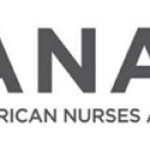Nurses Flock Back to Hospitals After Leaving in the Pandemic
 Many nurses who left hospital staff jobs during the pandemic out of exhaustion or for lucrative temporary jobs are coming back.
Many nurses who left hospital staff jobs during the pandemic out of exhaustion or for lucrative temporary jobs are coming back.
Their return in recent months, spurred by falling pay from the temp agencies and new hospital perks, is helping ease shortages that have crowded emergency rooms and forced hospitals to turn away patient referrals.
Alexis Bockting left her position at Barnes-Jewish Hospital in St. Louis early in the pandemic for temporary work earning up to $12,000 a week. She recently decided to take a staff job, as the gap in pay for staff versus short-term jobs narrowed from peaks and she grew weary of strange workplaces.
“There is something to be said for working in the same place every day, consistently,” said Ms. Bockting, who now works as an advanced-practice nurse at Mercy Hospital South in St. Louis.
Departures of nurses like Ms. Bockting left hospitals short-staffed as they faced a crush of Covid-19 patients and then a rebound of all patients, including people who had delayed care during the pandemic. Hospitals couldn’t take care of some patients and emergency-room wait times climbed.
This year, about 60 nurses have returned to Houston Methodist, which has helped the hospital system make more beds available to keep up with an 8% increase in demand, said Roberta Schwartz, chief innovation officer at the system’s flagship hospital.
“The boomerang nurses have returned,” said Gail Vozzella, Houston Methodist’s chief nurse.
At HCA Healthcare Inc., the nation’s largest publicly traded hospital chain, nurse hiring increased 19% in the first three months of this year compared with the average across the prior four quarters, and turnover dipped to near prepandemic levels.
Nurses who left its payrolls during the pandemic are among those HCA is now hiring, according to the company. About 20% of the company’s 37,000 nurses hired since January 2022 worked for the company at some point between 2016 and 2022.
Its spending on temporary nurses fell 21% during the first quarter compared with last year.
HCA hospitals are also turning away fewer patients, Chief Executive Sam Hazen told investors in April, though continued short-staffing means the company’s hospitals, operating rooms and emergency departments aren’t at full capacity.
The shift comes as soaring pay from temporary agencies slumps. Aya Healthcare’s temporary-nurse pay is down about 28% from a year ago, said Alan Braynin, chief executive of the agency.
Hospitals’ openings for temporary nurses were down by 51% as of late April from the same time a year earlier, according to the company.
Also contributing to nurses’ returns, hospital hiring and nursing officials said, are efforts to win nurses back by offering better pay, as well as perks such as child care, positions that aren’t as demanding and more flexible schedules.
Emergency-room nurse Linda Allen, who had gone to work for a temporary agency during the pandemic, returned to Sentara Healthcare in Virginia in mid-2022 as the 12-hospital system raised its wages and offered more flexible schedules.
She first returned to Sentara to work under temporary 13-week contracts, which the system expanded in the pandemic to give nurses more scheduling options. Ms. Allen then opted in September 2022 to become a full-time employee.
“They really did step up,” she said.
Sentara has also wooed nurses by offering student-debt relief up to $10,000 and adoption and infertility benefits, said Terrie Edwards, a regional vice president for the system. And it has boosted nurse wages by about 21% in the past two years.
Some 400 nurses rejoined Sentara last year, according to the system, reducing staff overtime and cutting its expense for temporary nurses in half.
Suzane Nguyen, who said she took a teaching job during the pandemic after nursing got too stressful and physically demanding, rejoined Houston Methodist in June 2022 after an old boss offered her a job working virtually.
In her new position, she collects information by video from patients as they are admitted, such as a list of their medications, vaccines and any directives for end-of-life care.
“The stress doesn’t compare,” she said.
(This story originally appeared in WSJ.)




